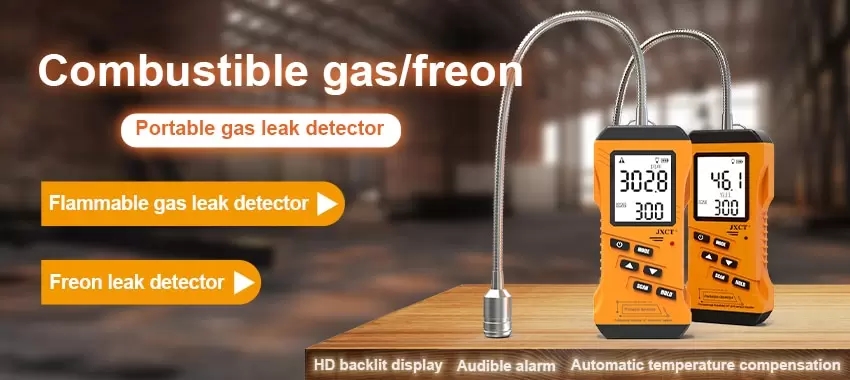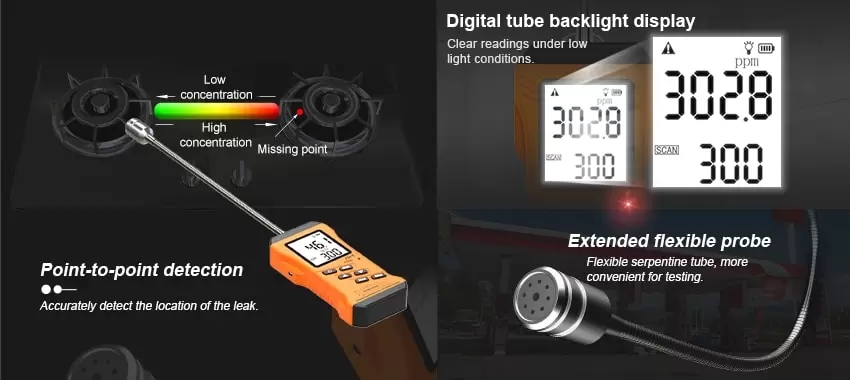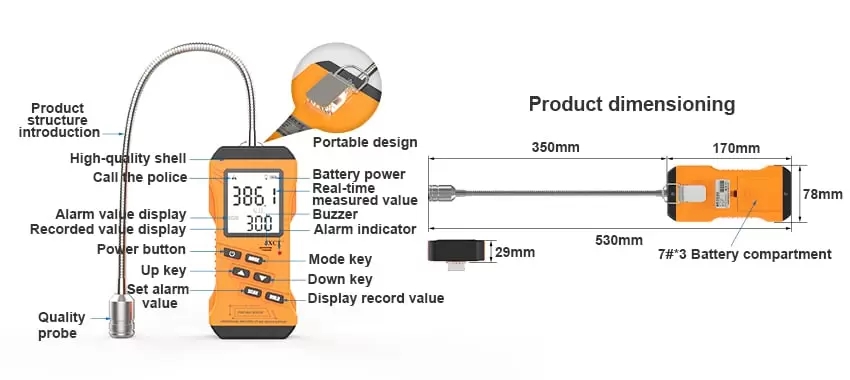Product Description:
Portable Freon gas sensor, detects combustible gas by natural diffusion, with high precision and repeatability. The shell of the portable Freon gas sensor is made of high-strength engineering plastic and anti-skid design. Easy to use and maintain, the Freon leak detector uses a Japanese Figaro gas sensor. It greatly meets the requirements of equipment accuracy and stability for industrial field safety testing.
Application scenarios:
Portable combustible gas freon gas leak detector is widely used in the detection of combustible gas and freon gas in gas stations / chemical plants / kitchen gas / pipeline construction / natural gas / metallurgical workshops and other scenarios
How to maintain the gas detector:
To maintain a gas detector, you should follow these steps:
Read the manufacturer’s instructions: Before performing any maintenance, consult the manufacturer’s instructions for your specific gas detector. The manual will provide detailed instructions on how to maintain your device.
Check for physical damage: Regularly inspect your gas detector for any physical damage such as cracks or corrosion that could affect its performance. Check sensor connections and filters for cleanliness and proper connections.
Perform routine calibration: Gas detectors require regular calibration to ensure accurate readings. Follow the manufacturer’s recommended calibration schedule and procedures to keep your device in good working order.
Conduct bump testing: Bump testing is essential to verify that the gas detector’s sensors and alarms are functioning correctly. This process involves briefly exposing the device to a known concentration of gas that triggers an alarm. Perform bump tests regularly to validate the gas detector’s functionality.
Check battery status: Check the battery status of your gas detector regularly to ensure it has sufficient power. Replace batteries as needed following the manufacturer’s instructions.
Keep software up to date: If your gas detector has associated software or firmware, keep it updated with the latest versions provided by the manufacturer. Software updates often include bug fixes and improvements to performance.
Proper storage: Store the gas detector in a clean, dry, and temperature-controlled environment to avoid exposure to extreme temperatures or humidity, which can damage the device.
Train users: Ensure users are properly trained on how to operate and maintain the gas detector correctly. Encourage them to report any issues or malfunctions promptly.
Record-keeping: Maintain a record of all maintenance activities, including calibration dates, bump tests, and any repairs or replacements performed. This documentation can be valuable for compliance purposes and troubleshooting.
By following these steps, you can help ensure that your gas detector performs accurately and reliably when you need it most.
Product Details:






